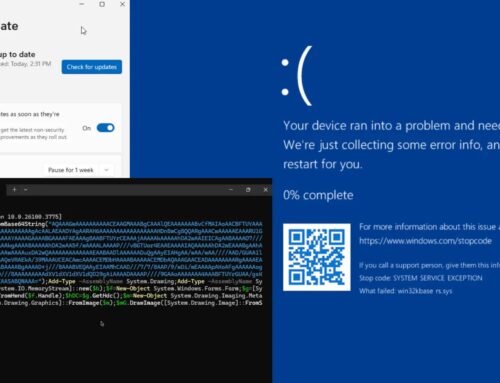
F5 Released Security Updates Covering Multiple Products Following Recent Hack
F5’s Urgent Security Patch Release: A Nation-State Attack and Critical Updates
In a significant disclosure that has reverberated through the cybersecurity community, F5 Networks, a prominent provider of application security and delivery solutions, has confirmed a security breach attributed to a sophisticated nation-state threat actor. This incident, detected in August 2025, exposed internal systems to prolonged unauthorized access, culminating in the theft of proprietary BIG-IP source code and other undisclosed sensitive information. The immediate and critical response from F5 has been the release of urgent security updates across its core product lines. This breach underscores the persistent and evolving threat landscape facing even the most robust technology infrastructures.
The Breach Details: A Nation-State Intrusion
The unauthorized access to F5’s internal systems was not a fleeting event; it represents a prolonged campaign by a nation-state actor. Such adversaries are characterized by their advanced capabilities, extensive resources, and strategic objectives, often targeting high-value intellectual property or infrastructure. The compromise led directly to the exfiltration of BIG-IP source code. The theft of source code for critical security and delivery products like BIG-IP presents a severe risk, as it could potentially allow attackers to discover new vulnerabilities, reverse-engineer proprietary mechanisms, or develop highly targeted exploits. The implications extend beyond F5 themselves, impacting organizations globally that rely on their solutions.
Impact on F5 Products and Customers
While the precise extent of the breach and the specific undisclosed information stolen remain under wraps, the immediate release of security updates indicates the criticality of the situation. F5’s product portfolio, especially its BIG-IP family, is foundational for many enterprises’ application delivery, load balancing, and security posture. The compromise of BIG-IP source code could theoretically lead to:
- Discovery of zero-day vulnerabilities not yet known to F5 or its customers.
- Development of sophisticated, undetectable malware or exploits tailored to F5 environments.
- Erosion of trust in the security of F5’s offerings.
Organizations utilizing F5 products must prioritize these updates immediately to mitigate potential risks stemming from this breach. The threat actor’s objective, while not fully disclosed, points to a desire for strategic advantage or future exploitation capabilities.
Critical Security Updates and Remediation Actions
F5 has responded decisively by issuing security updates that address vulnerabilities potentially exploited during the breach or to fortify their products against future similar attacks. While specific CVEs were not detailed in the initial announcement from Cyber Security News, the urgency strongly implies patches for critical weaknesses.
Organizations are strongly advised to:
- Immediately Apply All Available F5 Security Updates: Monitor F5’s official security advisories and support channels for the latest patches for BIG-IP, F5 NGINX products, and any other relevant F5 solutions.
- Conduct Comprehensive System Audits: Review logs for unusual activity, unauthorized access attempts, or new user accounts. Pay particular attention to systems interacting with BIG-IP or exposed to the internet.
- Rotate Credentials: Especially for administrative accounts and service accounts connected to F5 devices or internal systems potentially compromised.
- Enhance Network Segmentation: Isolate critical F5 infrastructure on segmented networks to limit potential lateral movement by attackers.
- Review and Update Security Policies: Ensure that intrusion detection/prevention systems (IDS/IPS), firewalls, and endpoint detection and response (EDR) solutions are up-to-date and configured to detect known threat indicators.
- Perform Security Scans: Utilize vulnerability scanners and penetration testing tools to identify and address any newly exposed weaknesses.
Detection and Mitigation Tools
While specific CVEs linked to this particular F5 breach are yet to be fully disclosed, the following tools are generally useful for detecting vulnerabilities in network infrastructure and applications, including those from F5:
| Tool Name | Purpose | Link |
|---|---|---|
| Nessus | Vulnerability scanning for networks and web applications, including F5 devices. | https://www.tenable.com/products/nessus |
| OpenVAS | Open-source vulnerability scanner, can identify misconfigurations and known CVEs. | https://www.greenbone.net/en/community-edition/ |
| Wireshark | Network protocol analyzer for deep packet inspection to detect anomalous traffic. | https://www.wireshark.org/ |
| Snort/Suricata | Intrusion Detection/Prevention Systems (IDS/IPS) for real-time traffic analysis and threat detection. | https://www.snort.org/ / https://suricata-ids.org/ |
| Security Information and Event Management (SIEM) Solutions (e.g., Splunk, Elastic SIEM) | Aggregates and analyzes security logs from various sources, aiding in threat detection and incident response. | (Provider specific) |
Key Takeaways for Cybersecurity Professionals
The F5 breach serves as a stark reminder that no organization, regardless of its security expertise, is immune to sophisticated attacks. The key takeaways for IT professionals and security analysts are clear: vigilance is paramount, proactive patching is non-negotiable, and a robust incident response plan is critical. The theft of source code, especially by a nation-state actor, elevates the risk profile significantly, demanding immediate and thorough action from all F5 customers. Stay informed through official F5 channels and prioritize these updates to secure your infrastructure against the ongoing, evolving threat landscape.





